So, you’ve been volunteered to run the concession stand for your team’s upcoming tournament. No big deal, you think; I’ll just sell some chocolate bars and sports drinks. Well, there’s actually a lot more to running a concession stand at a sports tournament, even if it’s just run by volunteers. This guide will provide you with all the information you need to run a successful concession stand at your next tournament.
Click here for the Free Download: Tournament Concession Stand Checklist
There’s three phases to running a concessions stand: 1) getting organizing, 2) actually running it (Game Day!), and 3) wrapping it up. I’m not going to lie, actually running will take some work. But, if you spend enough time getting organizing beforehand, you’ll find that you’ll feel way more prepared and less stressed out during the day. Who knows, you may even get some time to watch some of the games during the tournament!
It’s easiest if you think of the broad categories of running a concession stand first, then plan out the details of each category for each of the 3 phases. Here’s the main categories to think about:
- Place: your location, and the stuff you need
- Provisions: the food and any other stuff you’ll be selling
- People: volunteers, customers, and staff at the venue
- Planning ahead, checking in, and tracking for next time: details that make each phase easier
| Phase 1 Getting Organized | Phase 2 Running it: Game Day! | Phase 3 Wrapping it Up |
| Place | Place | Place |
| Provisions | Provisions | Provisions |
| People | People | People |
| Planning ahead | Checking In | Tracking for next time |
As you’ll see below, the biggest phase is Phase 1: Getting Organized. As mentioned, the bulk of your work happens BEFORE Game Day. But, if you do as much pre-planning as you can, your Game Day and wrap up will actually go much more smoothly. Trust me!
So, let’s get started, by getting organized!

PHASE 1: Getting Organized
A/ Place
1. Identify any rules that need to be followed
a) Permits
Sometimes tournaments are hosted at schools, but sometimes the venue is a recreational centre or sports complex. These venues may already have a for-profit concession stand, so you’ll have to make sure that you’re allowed to run your own concession stand.
If your concession stand is competing against a concession stand at the venue, make sure you identify why you’re running it. Maybe it’s a fundraiser, or you’re selling homemade food. If the venue is already selling hot dogs and pizza, don’t sell the same stuff!
Even if the venue doesn’t already have a concession stand, you’ll need to make sure that the venue permit allows for a food concession stand. There might be additional rules that you’ll need to follow (i.e., having a place for volunteers to wash their hands), and you also might need to request additional supplies (more on that below).
Make sure that you have a copy of the permit, and the permit guidelines, and have a copy of each with you on Game Day. That way, if there’s any questions about your concession stand, you can easily refer to the guidelines.
>> What you need: copy of the permit, copy of the permit rules
b) Setup
Request tables and chairs, and any other appropriate supplies from the school or venue. Don’t assume everything that you need will be there for you.
Make a list of what WON’T be provided. There’s nothing worse than showing up assuming you’ll have extension cords for your crockpots, and finding out that there’s none around. You may not be able to think of every single detail ahead of time, but by reviewing what you’ll need and what you know you’ll have, you will likely think about some of the things that won’t be included.
Make sure that for every item that won’t be supplied, you know where it’s coming from. You may not necessarily need to bring everything – you can ask league organizers or even volunteers if they can bring some of the items as well.
Keep track of all this using a setup checklist. This will help you think of as many details ahead of time, but it will also help you stay organized on Game Day as well.
>> What you need: setup checklist
c) Layout
In addition to the setup and supplies, also think about how you’re going to layout your concession stand. Think about where you’re going to sell each category of food item, and where you want customers to pay. If you have a longer setup, you might want a specific spot for customers to order and then pay in a separate spot. But if your space is a little more cramped, it might make more sense to serve customers just as they walk up to the booth.
If possible, go to the venue beforehand, and see the space first hand. This will help you plan your booth. This may not always be possible, but it avoids Game Day surprises.
If it helps, think about the customer “flow”. For example, if serving coffee and tea, think about the order that customers will be stopping at each step: 1) grab a cup, 2) pour the coffee, 3) add the sugar and cream, 4) stir. It doesn’t make sense to have the sugar and cream BEFORE the coffee, because then you have customers backtracking and causing a bottleneck. You’ll also want to have stir sticks and lids at the end, as people are walking away.
And don’t forget a garbage can! There’s nothing worse than seeing a pile of creamers and sugar wrappers just sitting on the table. Make it easy for customers to clean up after themselves!
Also, make it LOOK good. Adding visual touches, like using tablecloths and small containers for food items (rather than just piling things up on the tables) makes your concession stand much more appealing and professional.
d) Signage
As you decide on your layout, also think about any relevant signage you’re going to need. This might be directions on how to get to the concession stand within the venue, or any instructions at the stand itself. Plan as for as many signs as you can think of, but also have extra paper and markers on hand for anything that comes up last minute.
>> What you need: layout plan, list of related supplies, signage
>> Plan Ahead for the Place <<
2. Know the setup
If possible, check out the venue ahead of time. The spot for the concession stand may already set for you, but there’s also a chance that you can pick where you want to setup. So think: location, location, location! You’ll want to be where the action is! Find a spot that’s central to where people will be walking by, but you’ll also need enough room to setup properly.
A good location is always near where the tournament standings will be posted. This is a natural spot that people converge at, so why not make sure there’s some tempting treats to catch their eye as well. If this doesn’t work, then at least put up some eye-catching signage so that people know there’s a concession stand nearby.
B/ Provisions
1. Decide on the menu
The menu is really the main event of your concession stand. What kind of food will you be selling? Are volunteers making it ahead of time, will you be buying food, or a combination of both? You’ll want to think about foods that are:
- Relevant for your crowd (i.e., don’t make your only beverage choice be coffee and tea at an elementary school tournament)
- Easy to sell in individual servings
- Easy to serve quickly (i.e., handing someone a pre-wrapped muffin vs. making a custom sandwich)
- Convenient for your customers to eat on the go with their hands or minimal utensils
- Healthy
- …But maybe some junk food, too 🙂
Looking for menu ideas? Here are 35 of the best concessions stand menu ideas
2. Label homemade food
a) Allergies
Think about labelling any homemade foods that contain any high allergen foods that aren’t obvious. For example, if you’re serving homemade banana loaf, is it obvious that there’s walnuts in it? You don’t necessarily have to go peanut free (unless it’s a condition of the venue permit), but labelling is a good idea.
b) Dietary restrictions
If you’re serving any nut-free, gluten-free, or vegetarian options, you may want to consider identifying these as options for customers.
c) Condiments and utensils
Don’t forget to think about the related condiments and utensils you’ll need for each food item. For example, if you’re serving walking tacos, you’ll want to make sure you’ve got all the toppings, and serving spoons for each. Coffee and tea need milk, cream, and sugar. Crock pot chili needs a serving spoon, individual bowls, and utensils.
3. Stock Up Your Inventory
a) Homemade food
If you’re planning on selling homemade food (like yummy baked goods or prepacked baggies of carrots and celery), make sure you have a wide range of options. Try to minimize any duplicates. This helps ensure you have a good selection of choices, and it also helps prevent your concession stand from turning into a bake-off!
You’ll also want to make sure that you’ll have enough to sell if one or two volunteers forgets what they were responsible for, or if something comes up and they can’t commit to bringing their supplies after all.
If you’re selling baked goods or food prepared at home, ask your volunteer food preppers to bring items that can be sold individually and with minimal effort (think banana muffins instead of banana bread). This also makes it easier to put reasonable prices on items (more on pricing below).
And don’t forget to put out a call for volunteers bakers/food preppers! More on that below, in the Sign Up section.
b) Store bought
There’s nothing wrong with reselling pre-packaged, store bought food. Chocolate bars, granola, bars, pretzels: if it’s something you think will sell and help raise money for your cause, go for it!
Stock up at a wholesaler, so that you’re maximizing your resale value.
Ask the league contacts if there are any pre-existing relationships with food vendors. For some long-established leagues, they may already have pre-existing relationships or contacts with local food vendors.
Again, think of providing a range of choices. You’ll want to have a good selection of choices for your customers.
c) Merchandise
Will you be selling any kind of merchandise at your concession stand? Some sports leagues may have branded merch that they sell to fans. Or, maybe players are fundraising, and they’ve created some jewelry or other items to sell, with the proceeds going back into the league.
If you are pairing your concession stand with a merch booth, talk to the tournament organizers so that they’re aware and onboard with the idea.
d) Inventory Tracking List
As you plan your inventory and stock, make sure you have a tracking list of where each item is coming from, and who is responsible. This will make things much easier for you, trust me. Not only does it make it easier to follow up with volunteers, but it also lets you see at a glance the overall food options for the day. Make sure you’ve got a good range of food options.
This also helps you identify any items you could delegate. You don’t have to do all the work! For example, you can ask a volunteer to buy the store bought food. As long as you’re clear on what’s needed, there’s nothing wrong with delegating some of the work.
Be sure to bring your inventory tracking list with you on Game Day, so that you know if anything is missing.
>> What you need: Inventory Tracking List
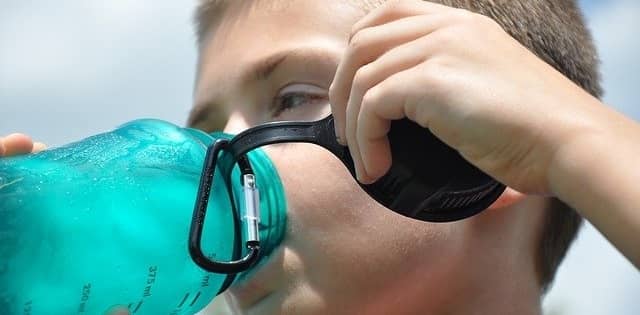
4. Managing Money
a) Pricing
It’s important to think about how you’re going to price your items. You want to find a balance between what’s reasonable, and what’s actually going to make you some money! You’ll need to make sure you at least cover your costs. If you’ve bought an inventory, do the math to calculate how much to charge for each item.
Here is a sample list. Keep in mind that it depends on how much you paid for each item, and its size.
Pricing examples:
- Chocolate bars: $1.00
- Bottled water or soda: $1.00 or $1.50
- Sports drinks: $1.50
- Muffins/Cupcakes: $1.00
- Cookies: $0.50 or $1.00, depending on size
- Fruit: $0.50
- Chips: $0.50 or $1.00, depending on size
Having an overall budget is a good idea as well. Track all your expenses, and track all your profit. Then you’ll have a clear amount of total money made!
If you’re lucky to have volunteers providing baked goods or other foods prepared at home, then you’re looking at 100% profit on those items. Just make sure you price them reasonably, at an amount that make sense to customers.
You’ll also want to have a clearly written menu that customers can see before they order. Sometimes price is a deciding factor for making a purchase. It’ll also be easier on your volunteers, so that when people ask, “How much is a muffin”, volunteers can point to the menu, and provide the answer quickly.
Also, keep the math easy! Try to keep things at either even dollar amounts, or in quarters. For example, it’s a lot easier to add: $1.50 + $1.00, than it is to add: $1.15 + 1.35 (both equal $2.50, btw!) . Keeping the math easy helps volunteers not only because they can calculate the total faster, but they can count change out faster as well. It also helps customers because they can more easily do the math themselves as well.
And have a calculator! Yes, most people have smartphones with a calculator feature. But smartphones can be distracting, and volunteers shouldn’t be expected to have to share their own smartphone. Include an old-school calculator in your cash box, which will help with math.
Also, some volunteers may get nervous when put on the spot, and might feel more comfortable using a calculator, even for “easy math”. A calculator will also help settle any disputes related to total calculations.
b) Cash Box
Most volunteer concession stands run on a cash system. You may want to get sophisticated and setup a smartphone pay system, but that’s totally up to you! Just decide which system will be easiest for your volunteers, as they will be the ones accepting payments.
When using a cash box, make sure you start the day with a float (some money already in it), and include lots of change and small bills. Guaranteed, you will have some customers using a $20 to buy a $1 muffin. So you’ll need to be prepared to provide a lot of change back.
Keep track of your float, including how much you started with, and how much you might have to add during the day. Be prepared for a volunteer to come up to you halfway through the day asking, “Do you have any more change?” Keeping track throughout the day means you can more easily calculate your profits at the end of the day.
You’ll probably want to collect some money from the cash box throughout the day as well, so that it isn’t overflowing with $20s. Unfortunately, an overflowing cash box can be a tempting target for thieves, even at charity events.
To keep track of all the cash, it’s best to only ever have it in two spots: the cash box, and a secondary, locked up location where you keep extra change and surplus cash that you’ve collected throughout the day. Make sure you know who has access to the locked location. You might want it to only be yourself, but that means you have to be 100% accessible during the day for “change runs”. If you delegate this to a trusted volunteer, make sure they know not to share that duty with anyone else, unless they have your permission to do so.
c) Fundraising
If you’re running the concession stand to raise funds for a charity or for the league, try getting creative about other ways to make money, too. Maybe you could sell 50/50 draw tickets, or maybe you’ve asked local businesses to donate items for a small silent auction.
You could also just have a jar at the concession stand labelled “Donations”, so that anyone could make a donation without necessarily purchasing items.
Whatever you decide on doing, just make sure it’s manageable and that there’s accountability. For example, make sure you have enough volunteers to manage it. And, it’s critical to make sure that there’s a way to track the money being raised through each method. For example, the money raised through a 50/50 draw should match the number of tickets sold.
>> What you need: calculator, cash box, small bills and change
>> Plan Ahead for Provisions <<
5. Related supplies
For every menu item that you’ll be offering, think about if it requires any related supplies. Often providing napkins is enough. But think of the example of selling coffee and tea. You’re not just providing coffee: you’ll need paper cups, sugar, sweetener, milk, cream, stir sticks, and lids. Oh, and a little garbage nearby for all those little bits of debris, like wrappers and stir sticks. You’ll also want to keep the milk and cream cold, since it’ll likely be sitting out all day.
If you’re selling tea, what kind? Just black tea, or herbal options as well?
So, once you decide on your menu, think about the related supplies. A trick to this is to imagine you’re a customer who has just bought that item. What would YOU expect to be on-hand? If you’re selling homemade chili from a crock pot, you’ll want paper bowls, a spoon, and napkins. If you’re really accommodating, you might even have some salt and pepper!
Add these items to your Inventory Tracking List as well. Not only does this help keep things organized for this Game Day, it’ll be a great starting point for the next time around as well.
Remember, you can always ask a volunteer to be responsible for bringing some of these supplies as well. Not all volunteers need to be bakers! Things like napkins, tablecloths, paper towels, and utensils often get overlooked in the planning.
Also, think about bringing a cooler to keep drinks and coffee supplies cold. You may not have access to a refrigerator, so having a cooler on hand might be a good idea.
>> What you need: any relevant supplies related to your menu items
6. Menu
You may want to write out your whole menu ahead of time, but this gets tricky if you’ve got a lot volunteers bringing food that was prepared at home. You may not know every menu item until tournament morning! So it’s probably best to find a happy medium: write out as much as you can beforehand, and be prepared for last-minute edits in the morning during setup.
Consider bringing extra Bristol board, sharpies, and masking tape, so that you can make edits throughout the day. You could also use a whiteboard or a chalkboard, which makes edits even easier. Just remember to bring extra whiteboard markers or chalk!
>> What you need: Bristol board, white board, and/or chalkboard, writing materials, masking tape
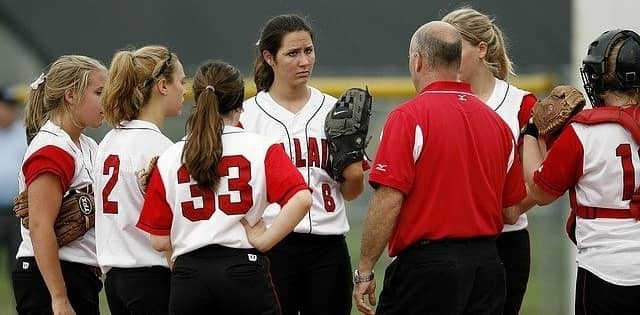
7. Leftover Inventory
Have a plan for any leftover inventory. Hopefully you’ll manage to sell out, and maximize your profits! That’s your best case scenario. However, be prepared to have leftovers. If it’s leftover baked goods or prepared foods, divvying it up amongst volunteers (or any lucky lingering customers!) is fair. And don’t forget any venue staff who have helped out during the day as well!
But dealing with leftover store bought food is a bit trickier. Any remaining store bought inventory dips into your profits, as you’ve paid for it ahead of time. Towards the end of the day, if you have a lot of stock left, think about discounting your prices. Everyone loves a deal! Just find a price point that still makes sense. You’ll want to at least break even.
If you’ve got boxes of unopened food, maybe you can return it. Of course, this depends on the policy of the store where you purchased it.
If the league runs tournament concession stands on a regular basis, keep the inventory for the next tournament (keeping an eye on expiry dates, of course). Just be sure to identify a point person for storing the stock, and communicate this to the league.
>> What you need: A plan for any remaining food and/or merchandise
8. Plan for the extras
Many times, the concession stand becomes a focal point of the tournament. Just like people gravitate to the kitchen at parties, people will naturally gravitate to the snack bar with questions or looking for directions. Be prepared to act as a concierge service: people will likely come to the snack bar asking for directions to washrooms, questions about the tournament, lost and found, etc.
It’s an inevitable risk of any tournament: players may get injured. Coaches and tournament organizers are usually prepared for injuries, but it’s sometimes a good idea to have a first aid kit and some ice packs at the concession stand as well. It’s definitely not your responsibility to be a medical tent, but it also doesn’t take much effort to have some ice packs on hand. Emergencies happen, and sometimes it’s easier to run to the concession stand than to track down a coach looking for the first aid kit.
>> What you might need: first aid kit, ice packs, coolers
9. Stay Organized
Use a binder! As you see, you’re going to end up with a bunch of checklists, notes, and important documents like the permit and guidelines. Keeping everything together makes it easier for you to stay on top of everything. You will inevitably be working in multiple formats (email, text, telephone), so try to stay on top of everything by keeping it in a central location.
Having a binder not only keeps YOU more organized, but it’s easy for someone else to see where things are at as well. You may need to ask for additional help, or maybe you have to step away from volunteering for personal reasons. Either way, a binder helps keeps things as organized as possible.
>> What you need: binder or clipboard
C/ People
1. Organizing volunteers
a) Sign up
The success of your concession stand really relies on the people who will be running it. So get people signed up! Think about how many people might be attending the tournament, and make sure you’ve staffed enough volunteers. You will likely want to have a minimum of 2 volunteers at the booth at all times, and maybe even more if you’re anticipating a large amount of traffic.
It’s better to over-staff rather than be short-handed, as volunteers will probably be happy hanging out and chatting, or taking a break to watch a some of the games.
Send a call out through the sports league, identifying you’re looking for volunteers. Include what their responsibilities will be, how many hours they’ll be needed, and how their help will support your cause. You could even specifically mention that you’re looking for parents, siblings of players, students, or community volunteers – sometimes people may not think that they’d be suitable for a role, so let them know they’re welcome!
If you’re planning on selling homemade food, then you’re going to need some bakers and food preparers! So when you’re put out your call for volunteers, let them know you’re also looking for food items to stock the concession stand. You could provide categories of food items (e.g., baked goods, fruits and veggies, etc) to help volunteers decide what to prepare. But you’ll also want to track what people have signed up to bring, so that you don’t get 10 batches of banana muffins!
b) Contact Information
Make it clear who volunteers should contact if they’re interested in signing up. Provide a name, email address and/or telephone number, so that they can contact you directly. And make sure you get their name and their contact information, too! You’ll want to be able to follow up with them directly, so that you can communicate and confirm details.
You’re going to end up with a list of names, contact information, and roles, so try to be organized right off the bat. Start with an excel spreadsheet, or even a handwritten list. This way you can easily send out an updates or reminders.
Volunteers might sign up at the last minutes, or they make back out at the last minute, so you’ll want to make sure you actually know who is going to be showing up on Game Day, and what they’ll be bringing or doing.
Make sure that volunteers know who to contact if they can’t make it at the last minute. Most volunteers will want to get in touch with someone, so make sure they know who to contact, whether it’s you or someone else.
Having a volunteer contact list is also vital in case there’s any last minute changes for the tournament, such as a cancellation or delay due to bad weather.
>> What you need: Volunteer list, including contact information
c) Schedule your volunteers
Depending on how long the tournament runs, you will probably want to schedule your volunteers in shifts. Don’t assume that they’ll be working for the whole day! Some tournaments start early and run all day, and that’s a long shift! Volunteers are likely going to be related to or at least know some of the players, so they’ll appreciate some time to check out some of the games as well. Schedule volunteers to work smaller shift hours, and don’t forget to give them some break time, too.
Identify a lead volunteer, even as volunteers change shifts. This way there’s consistency and someone who can answer questions that may arise.
Think about when the tournament starts, and how early you’ll want to start running your concession stand. You’ll also need some volunteers for setup and cleanup, so consider a few extra hands earlier on, and at the end of the day.
>> What you need: Volunteer schedule
d) Train your volunteers
There’s nothing worse than showing up to a job and not knowing what you’re supposed to be doing. So, don’t assume that your volunteers will know right away what’s expected of them. Sure, they will know generally that they are selling food to people. But walk them through the process, and show them the system that you’ve setup. Show them exactly where the cash box is, and what to do with large bills.
Will volunteers be allowed “freebies”? if so, how much free food can volunteers have. What about refs, coaches, etc? All this should be explained to volunteers, so that they’re not guessing and making their own “rules”.
2. Customers
a) Advertise ahead of time
Make sure that any of the communication that goes out to tournament players and coaches includes the fact that there will be a concession stand. If you’re really organized, you might even include some of the kinds of foods you’ll have, so that players can think about their lunch or snack options ahead of time.
Most concession stands are cash only, so this lets players and coaches know to bring some cash for the concession stand.
If you’re running the concession stand as a fundraising effort, make sure you include that in your advertising. Whether you’re raising money for a local charity or for the club itself, customers like to know that their dollars are going to a worthwhile cause.
>> What you need: Communicate that there will be a concession stand
b) Advertise during the day
Make sure that people know where you are during Game Day! If you’re lucky, the venue layout will allow for a concession stand right in the middle of all the action! However, some venues might be more limiting, and your concession stand may be off in a corner, or down a hallway. If that’s the case, post signs around the tournament, reminding spectators, players, coaches, and officials that there’s yummy treats being sold at your concession stand!
>> What you need: Flyers promoting the concession stand
3. Venue staff
Many venues will have regular staff on-site during tournament days. For example, there might be janitorial staff on-site at a high school. You will want to befriend these people! They will hopefully be able to answer any last-minute questions you may have during setup and even throughout the day. You will also want to make sure that you’re following all the rules set out by the venue permit.
I have been involved in many tournaments and concession stands, and knowing the janitor by name is a huge help. They know the venue inside-out, and it’s their job to keep the place clean and intact, so you want to make sure you’re not causing them an extra unnecessary work.
Don’t however, take advantage of staff. The still have a job to do – looking after the venue – so don’t treat them like they’re tournament volunteers. Make sure you’re respectful, and that you’re not making their job more difficult. Clean up after yourselves, and always be courteous.
>> Planning Ahead for People <<
4. Uniforms
Okay, maybe uniforms is a bit strong of a word. But, do consider asking your volunteers to wear the same-colored shirts, so that they are easily identified and the snack bar looks more professional. You don’t necessarily have to have shirts made up specifically for the day – but if everyone wears a yellow shirt, they’ll look more like their own team!
5. Space for volunteers
Make sure that your concession stand has some seating for your volunteers. There will inevitably be some downtimes, so make sure that your volunteers have a good space that they can take a rest in.
Make sure that only volunteers are accessing the concession stand. This will help to keep things organized, and also looks more professional. It also helps prevents things going missing, whether accidentally or intentionally.

PHASE 2: Running it (Game Day!)
Here we are: Game Day! You may not be a competing athlete or coach, but that doesn’t mean you’re not feeling any Game Day butterflies! You’ve put in a ton of work so far – and you haven’t even sold anything yet! Don’t worry, all that planning and prepping will be worth it.
It makes sense to still think about the three main categories (place, people, and provisions) while you’re running the concession stand on Game Day. You’ve planned for all three, but on Game Day you’re actively managing all three.
A/ Place
1. Game Day Setup
You’ve planned your layout ahead of time as much as you could, but now it’s time to actually set everything up. Make sure you get there as early as you can, and that you have recruited some volunteers to help with set up as well.
Give clear instructions, so that you’re not repeating yourself, or answering questions that could have been covered as instructions. Think about starting off with a huddle, so that all volunteers hear the same instructions, and know what to do. You could even write down some of the guidelines to follow, which helps keep things consistent as well.
And don’t wander off too far during setup – there will inevitably be some last-minute questions you’ll want to address. Starting off strong means setting a good foundation for the rest of the day.
Setup all your food and merch according to the layout you planned ahead of time. You want to think about customer flow, and what makes sense from the customer’s perspective.
Once you setup your concession stand, take a step back and walk through it as if you were a customer. Does it make sense where everything has been placed? Not only does this make this more pleasant for the customer, it also helps prevent bottlenecks and keeps things running more efficiently and smoothly.
Don’t forget the extras, like using tablecloths and small containers for food items. This adds to the visual appeal of the booth, but it also keeps everything neat and tidy as well.
Be prepared, but also be flexible. There may be some last minutes unexpected changes to your plan (i.e., fewer tables than you thought, or more food than you planned for), so you may need to adapt on the fly.
Oh, and as you’re unpacking food, don’t get rid of those boxes right away! You may need them for clean up at the end of the day.
a) Signage
Be ready to update your menu the morning of Game Day. You may have done your best to coordinate the food prepping volunteers, but there will likely be some last-minute cancellations, or changes to what they promised to bring. Don’t stress! Just be prepared to go with the flow.
You’ll also want to post any signs throughout the tournament area, so that people know how to get to the concession stand.
And, if you’re raising money for a charity, have a sign about that, too! People may be more likely to make larger purchases (or even donate their change) when they know the money is going to a good cause.
2. Keep Things Clean
Make sure that volunteers are cleaning as they go. Keep paper towels nearby, and ask volunteers to tidy up throughout the day. Not only does this make clean up at the end of day much easier, it also makes a much more professional and presentable space. You are selling food, after all, so you want to entice potential customers as much as possible.
Make sure that there are garbage bins close (but not too close so they’re stinky)! People are happy to clean up after themselves, but make sure it’s convenient for them to do so.
Keeping things clean also means there’s fewer things to trip on. Concession stands inevitably have boxes of inventory behind the booth. Having a tidy workspace makes it easier to maneuver around in.
3. Keep Things Fun!
Consider playing music at the concession stand, or think of other ways to keep things fun. Sure, your volunteers may be working during the day, but that doesn’t mean they can’t have some fun, too! And if your concession stand is a fun and cheery place, your customers will be happy to approach, too.
Just keep in mind that everyone has a different taste in music, so find a playlist that is appropriate for the crowd. And make sure the lyrics are appropriate! The last thing you want to do is be blaring musing that is considered offensive or has explicit lyrics in a public venue, especially if there’s kids around.
>> Check Ins for the Place <<
- Keep things clean
- Keep things fun
B/ Provisions
1. Keep Things Stocked
Keep reviewing your inventory stock throughout the day. You may have decided to put everything out at the beginning of the day, or you may have a few visual examples, but the bulk of stock is behind the concession stand. This depends on the setup of your booth, and also on the types of inventory you’re selling.
If you find yourself running low on supplies, you could consider sending a volunteer out to buy more inventory. This, of course, depends on what you’re selling, and how close you are to a store. But if you’ve run out of sports drinks before 10 am, it might be worth getting more inventory.
If you’re getting close to, or once you’ve sold out of an item, make sure that volunteers know. That way they’re not letting a customer pay for an item that’s already been sold out.
2. Cash box
As discussed in the Getting Organized section, you’ll want to check on the cash box throughout the day. Are there enough small bills and change? Are there lots of larger bills or excess cash that needs to be collected and stored in a second, locked location?
Don’t leave checking the cash box until the end of the day. You’ll want to keep a close eye on it, so that it’s not slowing down volunteers who need change, or that you’re not mysteriously missing money at the end of the day.
>> Check Ins for Provisions <<
- Check inventory
- Check cashbox
C/ People
1. Volunteers
a) No-shows
Even though you’ve done your best to recruit and setup a schedule for volunteers, you’ll also need to be prepared for some last-minute no-shows. Life happens for everyone, and whether they couldn’t get a ride, they ended up getting a shift at their paying job, or they simply slept-in, volunteers also have a lot going on.
Maybe you’ve got a volunteer on standby, or you can manage to recruit one of the athlete’s parents or spectators on the spot. Whatever your contingency plan is, be prepared that you may have to use it.
b) Check in regularly
Even if you’re working side-by-side with your volunteers, make sure you check in with them regularly. You might all be busy working with customers, and you may not be paying attention to them all the time. So, during the down times, just ask them casually how it’s going, and if they’ve run into any snags. They’ll appreciate your attention, and it’ll help you mitigate any potential issues before they get too big.
c) Breaks
Make sure that you’ve scheduled breaks for volunteers. Don’t necessarily rely on the natural ebb and flow of the customer rush! There’s always a lot going on during tournament day, and volunteers will naturally want to check out the action. Chances are, they are related to or are friends with some of the athletes or coaches, so give them the opportunity to chat and watch some games as well.
>> Check Ins for People <<
- Have a plan for no-show volunteers
- Check in with volunteers regularly
- Make sure your volunteers are taking breaks

PHASE 3: Wrapping It Up
Well, you’ve done it! You’re in the home stretch. The tournament may be over, or your inventory may be all sold out, but you’ve still got a few things to wrap up before you can say you’re totally done.
Keep in mind that no matter how prepared and organized you are, and how many contingencies you’ve thought about, there will inevitably be things that happen on Game Day that you weren’t prepared for. This is by no means a shortfall on you, the organizer. It’s literally just life. Sometimes things happen that just aren’t in our control, and that are unforeseen. Chalk it up to learning on the job! The best thing you can do is learn from it. Is there anything you can do for the next time, that would make it easier?
Don’t worry, the hardest part is over! Here are just a few things to finish off before you go celebrate with the tournament champions. As you’ll see, wrapping it up doesn’t take very long at all. Just some cleaning up, packing up, and lessons learned for next time!
A/ Place
1. Clean up, pack up, and tear down
a) Clean up
You’ve been tidying up as you go, so clean up should be a relatively easy task. Make sure you throw out any leftover garbage and wipe down all surfaces. It’s not the janitor’s job to clean up after you, so don’t leave a mess behind.
b) Pack up
Pack up any leftover inventory, including food, related supplies, and merchandise. Remember those boxes you had at the beginning of the day during setup? Well, they’ll likely come in handy now that you’re packing everything up again.
c) Tear down
Make sure that you leave the place looking like it did when you first arrived in the morning. If tables were folded up, and chairs were stacked, then make sure that’s how you leave things. Again, it’s not the janitor’s job to clean up after your mess, so be respectful, and leave things as they were.
Take down any signs, and wrap up any extension cords. If you leave a mess, there’s a chance that’ll get back to the permit office, and your league may have a harder time trying to get a permit the next time around.
>> Track for next time <<
2. Setup and supplies
Make a list of any supplies that you assumed were going to be provided and weren’t. For example, maybe you needed an extra table, extension cords, or access to tap for water for the kettle. Even if it’s not you running the next tournament concession stand, the next volunteer who does will appreciate your notes.
B/ Provisions
1. Leftovers
Make sure you’ve got a plan for any leftover food or merchandise. You may be able to return unopened boxes of store-bought food (depending on store policy), or you might want to hold on to them for the next tournament. For baked goods or pre-packed food, maybe hand them out to your volunteers or to venue staff.
Make sure you know who gets any leftover merchandise. This can definitely be used at the next event, but it needs to go to the right person.
The bottom line is to make sure you’re not getting stuck with a whole bunch of food or merch than you weren’t planning on!
>> Track for next time <<
a) Inventory
Make some notes on what sold well, and what didn’t. Maybe you stocked up on sports drinks, but only sold a couple of bottles. Or maybe you bought just one box of chocolate bars, and sold out by 10am. Either way, these kinds of insights will be helpful for the next concession stand.
Also, make some notes on any things that customers asked for, but you didn’t have available. This will also be helpful when planning inventory for the next tournament.
For merchandise, maybe you only sold one or two t-shirts. Or, maybe you sold out of some things. Again, track what were top sellers, and which not so much, and make sure you’ve got appropriate inventory for next time.
b) Fundraising
The ultimate question when running a concession stand as a fundraiser, is: “Did we raise enough money?”. As you can see, running a concession stand takes a lot of planning, time, and work. You’ll need to know that it was all worth it. Maybe you raised a bit of money, but not what you expected. Or maybe you exceeded you expectations.
Either way, take a moment to reflect on the effort vs. the pay off. If the work wasn’t worth the amount raised, then start brainstorming other fundraising ideas. However, if you raised a decent amount of money, get creative and think of ways to expand your efforts for next time!
C/ People
1. Volunteers
Be sure to schedule some volunteers for cleaning up, too. You don’t want to be left with all the wrapping up!
Your volunteers also put in a lot of work. Make sure that you thank them in person, and follow up by asking the league to acknowledge them as well. Thanking volunteer efforts is often overlooked, so make sure they feel appreciated.
Also, ask your volunteers if they’d be interested for next time. You’ve now got a crop of seasoned, trained volunteers, so encourage them to stick around for next time!
Lastly, make sure you THANK YOUR VOLUNTEERS! They’ve spent their timing helping out, and it’s important to acknowledge their work. Whether it’s a formal round of applause, or a quiet one-on-one thank you, be sure to show your appreciate for their work. A follow up thank you note or email is also a good idea.

2. Customers
Consider following up with any remaining customers. Ask them if there was anything they would have like to see being sold at the concession stand, or if there was anything else that would have improved their concession stand experience. This will help you plan your inventory for next time.
3. Venue Staff
Be sure to thank any staff at the venue as well. Their day probably looked different than usual, and they were likely a good help to your group. The extra work of venue staff, especially janitors, often gets overlooked. Thanking them personally, and even following up by letting the permit office know how helpful they were, is always a good idea.
Conclusion
Well, you’ve done it! You’ve successfully survived running a concession stand! No matter how many muffins you sold, or how much money you’ve raised, consider your concession stand a success! As you can see, it’s no small feat to plan, run, and wrap up a concession stand. There will always be things that come up that you didn’t plan for. Just go with the flow, track your lessons learned, and ultimately, try to make sure that everyone had a great day!
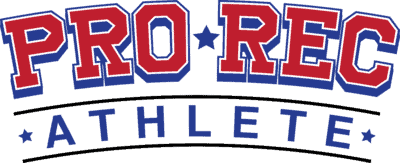
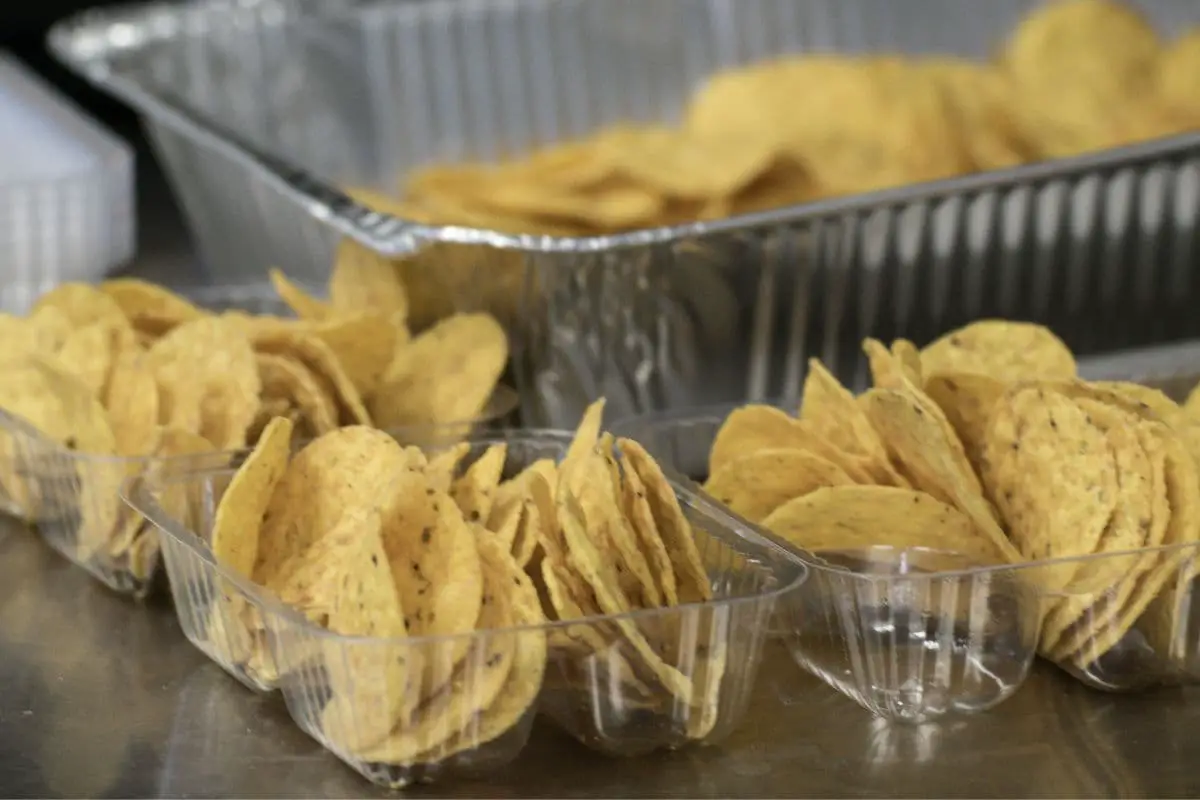
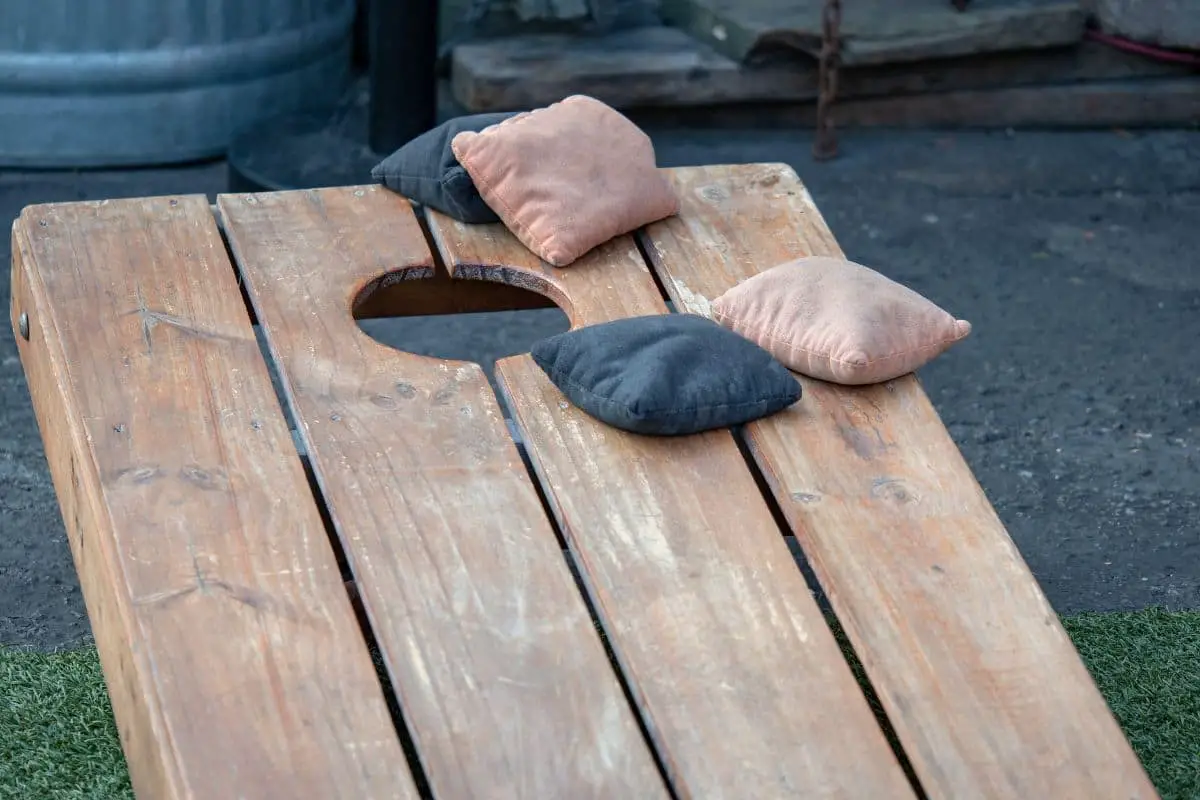
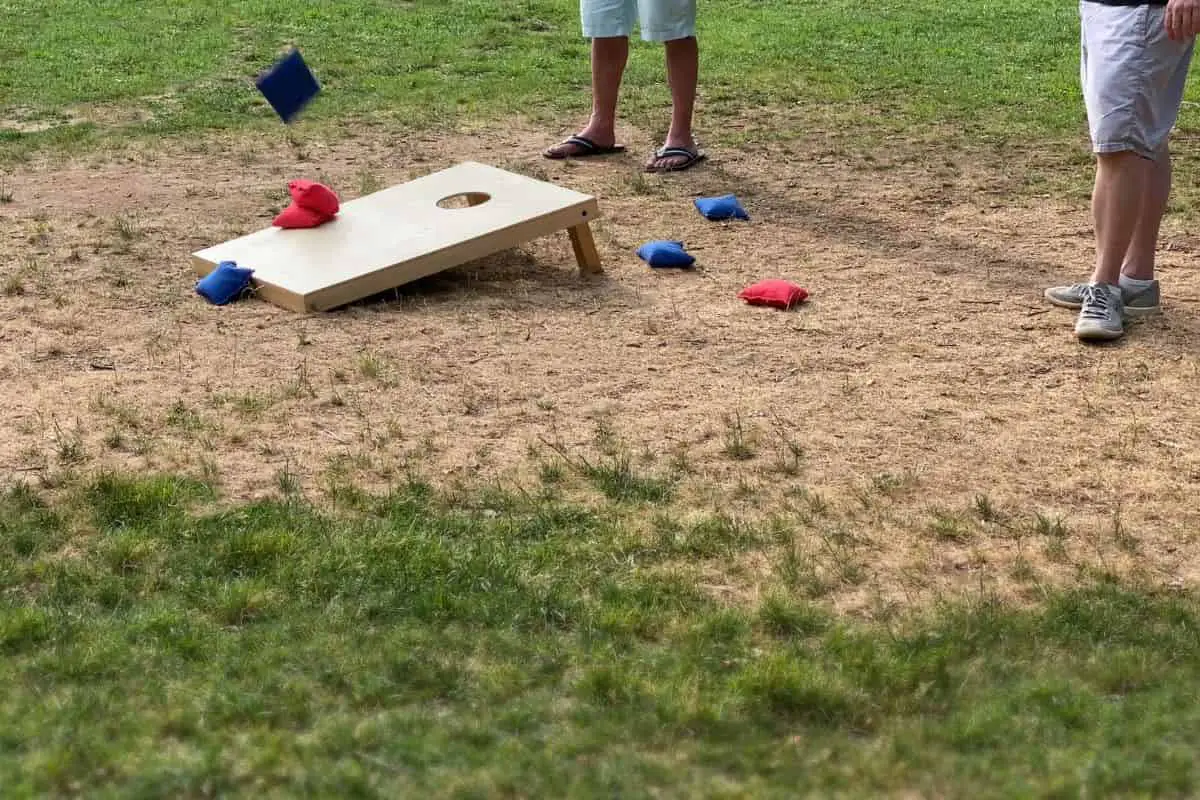

Leave a Reply
You must be logged in to post a comment.